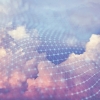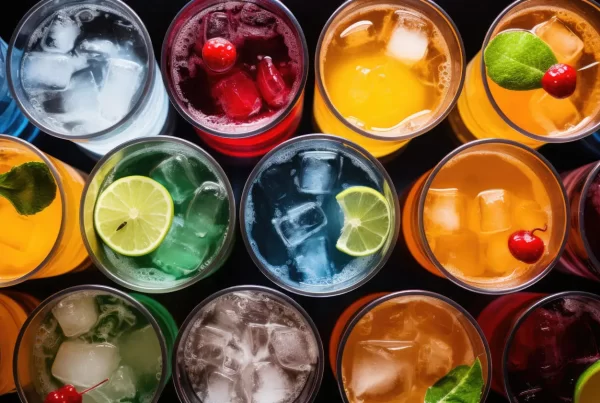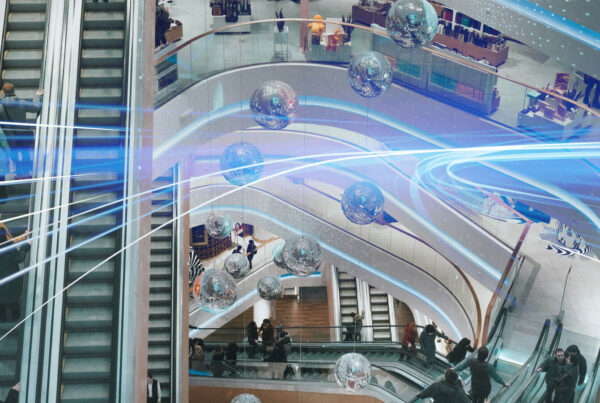It wasn’t just an event to witness—it was a chance to commune with the cosmos, and one other. The eclipse’s emotional and economic impact reveals much about who we are and what we really want most.
People didn’t just take in the total solar eclipse on April 8th. They went brazenly after it, with millions pursuing a spot in the Path of Totality and infusing billions into the economy. While 33 million live in that corridor—stretching from the southernmost reaches of Texas to the tip of Maine—an estimated 4 to 20 million traveled to it by plane, train and automobile. (Final numbers are still being tallied.) Beyond this, airlines offered totality flights, with consumers shelling out extra for coveted window seats and exclusive merch. Back on the ground, communities hosted blackout parties, film festivals, even mass weddings.
The Perryman Group projects the solar eclipse’s total economic impact at more than $6 billion—kind of like Taylor Swift hosting her Eras Tour in every major town along the path of totality. Twice.
So in a time of inflation, societal division, election turbulence and international conflict, what does the seemingly unanimous (and very enthusiastic) participation in the eclipse tell us? Something we’ve always known: people long to be in awe. And they’ll pay for that feeling.
Revealing Our Core Consumer Desires
“Clearly, there’s an undercurrent of human desire for some romance, wonder and joy,” says Valerie Jacobs, Chief Marketing Officer and longtime trends forecaster at LPK. “In today’s world where so much can be consumed through media, this felt like such a real and rare event—a chance to collectively experience something marvelous, not something traumatic.”
Awash in news headlines, editorial coverage and social media posts leading up to the event, Jacobs notes the unusually romantic language employed, too: “I was struck by the use of poetry and metaphor: ‘being held in the shadow of a moon’ and seeing ‘a sky suddenly cast in twilight.’ This is the language we use to describe something bigger than ourselves.”
“In a world that can feel like an incessant stream of headlines, we all stopped and marveled at the edge of the unknown.”
The eclipse also underscored a collective desire among consumers to slow down. “I don’t think my inbox has ever been so empty on a Monday,” says Emily Flannery, VP of Discovery, reflecting on the power of a nation going offline, if only for mere minutes. “In a world that can feel like an incessant stream of headlines, we all stopped and marveled at the edge of the unknown.”
How Brands Tapped Into the Eclipse
Brands leaned into the once-in-a-generation event in all manner of ways—from exclusive flights to vacation giveaways, road trip accessories to fast-food drive-thru exclusives, craft beers to limited-edition snacks (aptly named SunChips launched sun- and moon-inspired flavors). And of course, branded glasses aplenty. “Whether it was an eclipse-themed margarita special or STEM coloring pages coming home from my kid’s pre-school, it seemed like everyone had an angle on the decidedly off-line phenomenon,” Flannery says. But she notes that these brand experiences managed to strike a balance of fun and focus, celebrating the wonder of the eclipse without getting in its way: “There was something very special about the amount of planned, analog memory-making that happened that day. And while brands had the ability to create tagalong content to it, they stayed focused on facilitating person-to-person connection for this socio-environmental phenomenon.”
“It takes rigor to understand human desires,
then translate them into experiences we don’t
even know we want—yet.”
While the eclipse was the first foray into space for some brands, Jacobs says many have long been exploring this dimension as consumer interest rises. Take CosMc’s, the cosmos-themed drinks concept store from McDonald’s, designed to compete with Starbucks and Dunkin’. Promising “out-of-this-world products” because “everyday life can wear us down,” the concept echoes the eclipse mindset—and was likely years in the making. “Taking big, juicy human desires and boiling them down into commercial ideas may seem like magic, but it isn’t,” Jacobs explains. “It takes rigorous and insightful research to truly understand the human condition and our desires, then translate them into experiences, services and products we don’t even know we want—yet.”
“Consumer mindfulness, eco-anxiety
and holism are here to stay.”
Translating the Eclipse Impact into Future Strategy
So was the 2024 total eclipse a flash in the pan, or a cultural inflection point we’ll reference for decades to come? It depends who you ask, says Flannery, but it does cement the staying power of certain sociocultural trends. “I think this means that consumer mindfulness, eco-anxiety and holism are here to stay,” she explains. “Trends are cyclical and sociocultural trends are no different. I imagine that we will see movements like meeting-the-moment mindfulness and collective effervescence being hallmarks of our next several sociocultural trend cycles. Brands need to be thinking about these as they deliver for their consumers.” Jacobs foresees this fascination with the celestial influencing sectors like luxury goods and travel as well: “Brands are heading to a new creative frontier, exploring ideas like what’s out there? Why am I here? This stokes our own sense of wonder, and inspires consumer immersion.”
It’s also critical to consider ways the eclipse might impact a given business’s PESTLE analysis, which assesses macro Political, Economic, Social, Technological, Legal and Environmental factors that affect its forward trajectory.
The eclipse isn’t a new vector per se, but it’s certainly a consideration to watch. “As we look across PESTLE analyses for our client partners, we see a few vectors that are rising in prominence for influence and impact on consumer strategy,” says Flannery. “Despite going into an intense election season (the P in PESTLE), we see more evidence circulating around social, environmental and technological disruptions. These will impact near- to mid-term consumer strategy and planning for any brand, any category. To weather the next 18 months, brands should have a fresh view on these three factors, analyzing each with deployable strategies that, ideally, drive relevance, meaning and magic.”
Want to explore a PESTLE analysis for your business? Reach out to us here.








